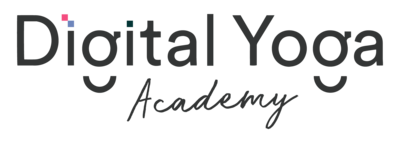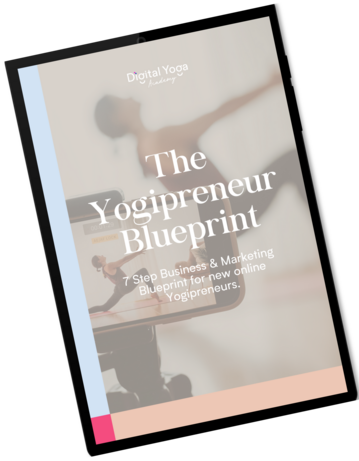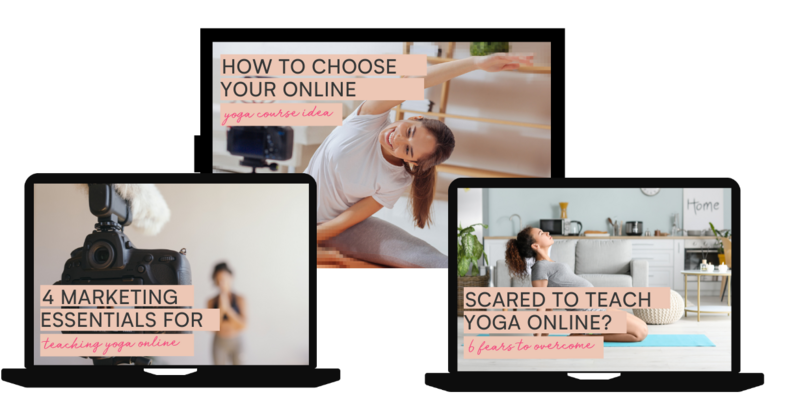8 Tips For Writing Compelling Email Copy For Yoga Teachers: How much time do you spend reading each email that you open?
Email subscribers have a short attention span when looking at emails and writing email copy often requires you to say a lot with a little.
There are some key pointers to keep in mind when writing emails that get read and clicked. Dive right in with these 8 tips for writing compelling email copy.
1. 90% educational and 10% promotional
Chances are, your email newsletter subscribers don’t want to hear about booking your classes and retreats 100% of the time.
While they may love your teachings and want to hear from you, there’s only so much selling you can do before they tune out.
In your email newsletters, get rid of the self-promotion (most of the time). And focus on sending your subscribers educational, relevant, timely information.
2. Keep design and copy minimal
A newsletter can easily feel cluttered because of its nature. The trick is to use concise copy and enough white space in the design.
Concise copy is key because you want to send your subscribers elsewhere (e.g. your website or blog) to read the whole piece of content.
Concise copy gives your subscribers a taste of your content so that they want to click and learn more.
White space is key in email newsletters. It helps visually alleviate the cluttered feel, and on mobile, makes it much easier for people to click the right link.
3. Make your email scannable
Research shows that people don’t read emails word for word. Instead, they scan the content for interesting elements. Some people also don’t like reading long articles so it’s important not to overwhelm your reader with long paragraphs. Make it easier for them to go through your newsletter by:
- Adding subheadings
- Using bullet points
- Highlighting vital information
- Using short sentences and paragraphs
Creating an email design that breaks up your copy with punchy subheads, numbered and bulleted lists, and small bites of information will allow subscribers to quickly read it and grasp your main message.
Making your email messaging scannable is especially important for your subscribers who open and read their emails on mobile devices. Too much text can make your email campaign seem like it goes on forever. This is a very important rule when we talk about email copy for yoga teachers.
4. Use less “we” and more “you”
Use the word “you” more than referring to “I,” “me,” “we,” and “us” in your email copy.
Keep the focus of your copy on your subscriber, rather than providing too much unnecessary information about yourself and your company.
After all, people who subscribe to get your emails are more interested in how what you offer is helpful to them. And how you can help their own yoga journey.
5. Focus on the benefits
Use email writing techniques that let your students and subscribers know “what’s in it for them”. That means talking about the benefits of what you offer, instead of simply listing the features.
Benefits would include the benefits of yoga rather than features which would include the location and dates of a class.
While it can be tempting to talk up your features, remember to put the most emphasis on the benefits. It’s said that benefit focused copy boosts CTR by 10%.
6. Tell stories
Incorporating an element of storytelling into email copy for yoga teachers adds an interesting human element that draws readers in.
You could even continue a story theme over a number of emails. E.g. a month-long theme being told over 4 x weekly emails.
This is an interesting way to keep your subscribers engaged and looking forward to receiving your email.
If your storytelling is about you, be sure to make it relatable to your subscriber. For example, it could be about your own yoga journey and how yoga has helped you which becomes even more relevant if it’s a similar story to that of your niche.
Even better if you can solve the subscriber’s problems (pain points) through your storytelling.
7. Personalise
Incorporating your subscribers’ names at the start of your email and also in the main copy can make your messages feel more personalised.
A truly personal email addresses the subscriber’s needs, desires, fears, preferences and other aspects of their personality. It takes into consideration the emails and content they’ve opened and clicked from the past, the reason (freebie content) they signed up for your list and anything else you’ve collected about them.
A lot of this isn’t typically considered personalisation – it falls more under discussions of segmentation and targeting. But I think it’s worth considering that relevance and personalisation are somewhat interchangeable when we think about it from the subscriber’s perspective, and not our own. A relevant email is personal, and a personal email is relevant.
8. Proofread and proofread again
Although this may seem obvious, proofreading is often overlooked.
Typos and inaccuracies in your email marketing copywriting can hurt your credibility with subscribers. In addition, testing that the links in your email text take people to the right website and blog pages is another important way to ensure subscribers who click through can convert and book your class or retreat.







